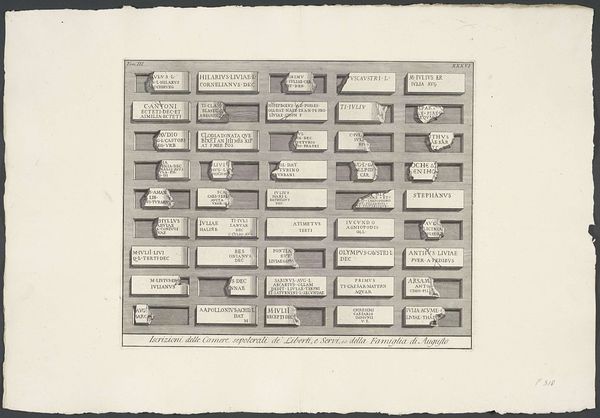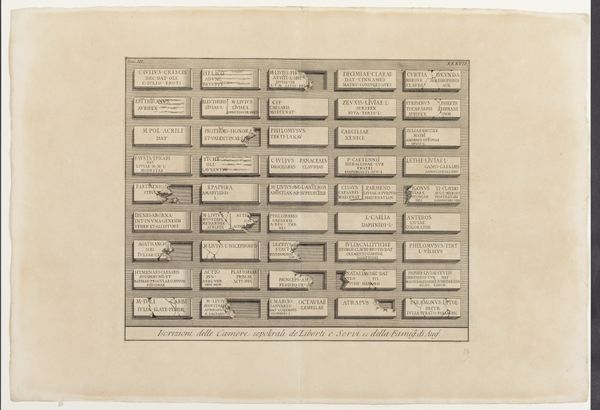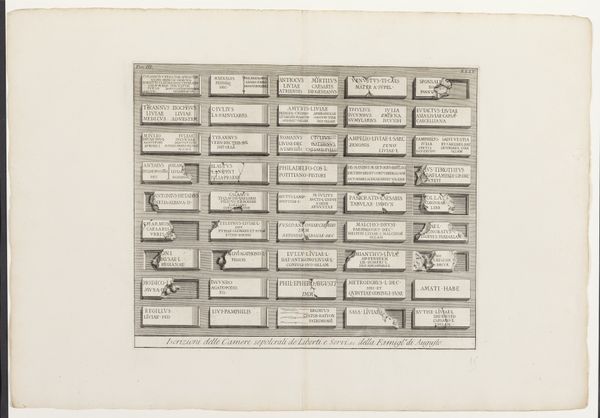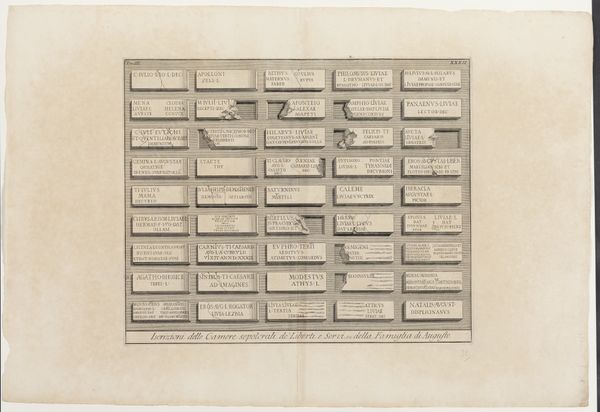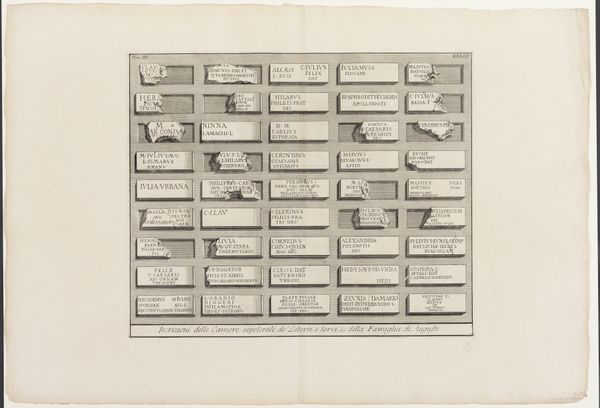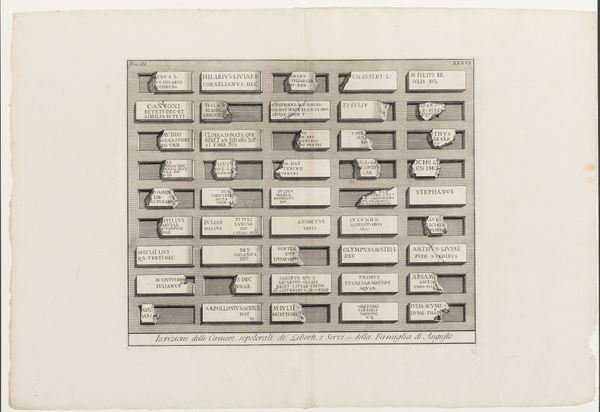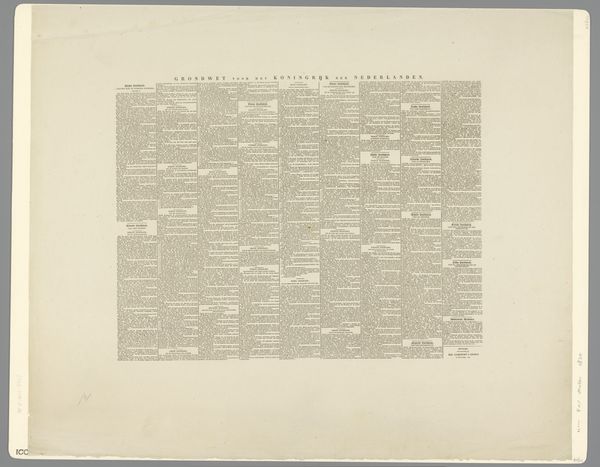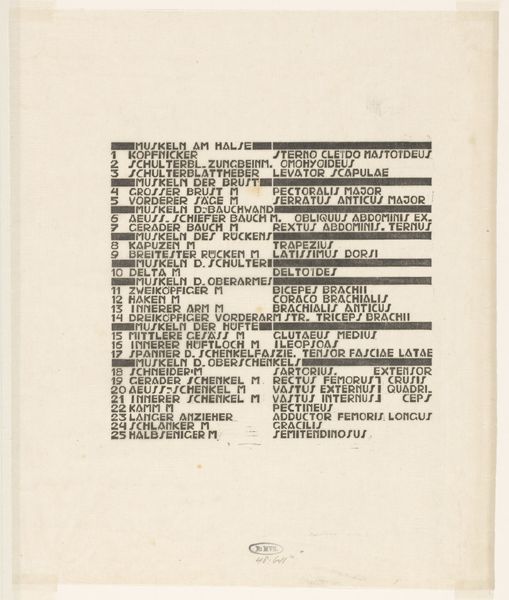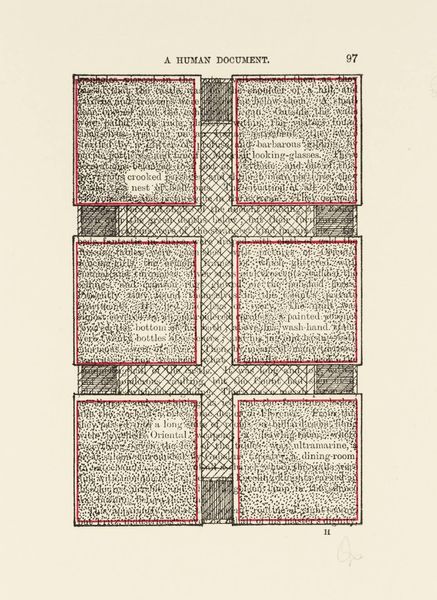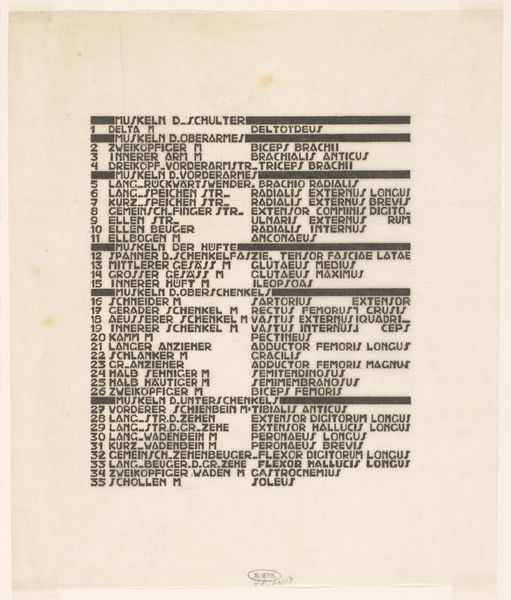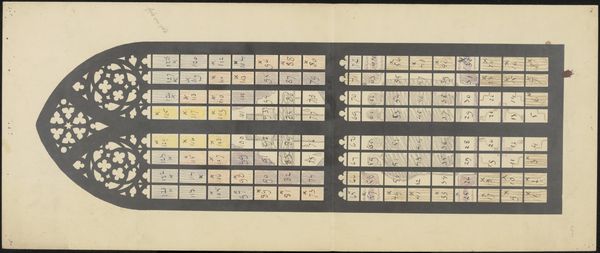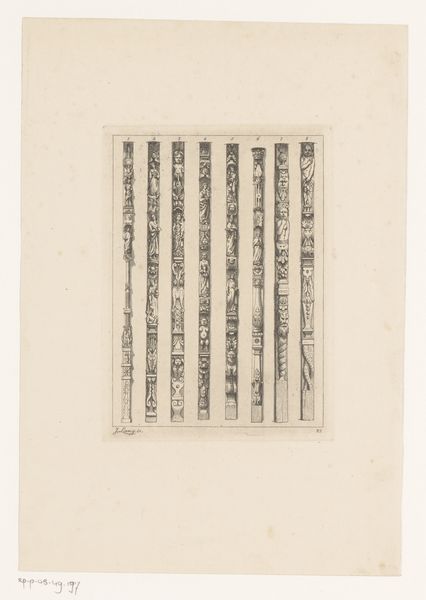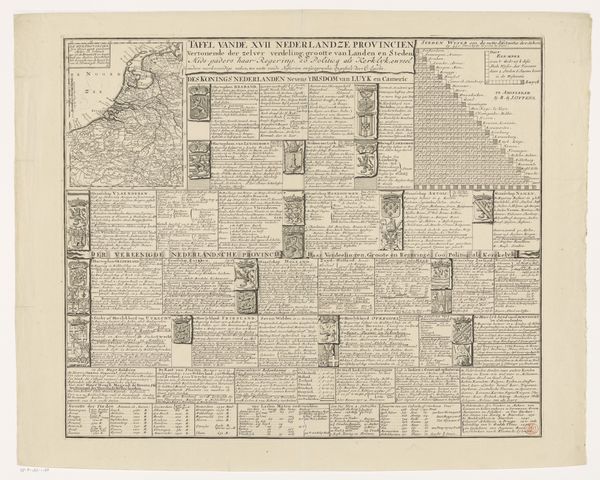
Inscripties uit de graftombe van de vrijgelatenen en slaafgemaakten van de familie van Augustus c. 1756 - 1757
0:00
0:00
graphic-art, print, etching, engraving
#
graphic-art
#
neoclacissism
#
ink paper printed
# print
#
etching
#
old engraving style
#
history-painting
#
academic-art
#
engraving
Dimensions: height 400 mm, width 482 mm
Copyright: Rijks Museum: Open Domain
Curator: This print by Giovanni Battista Piranesi, dating from around 1756-1757, is entitled "Inscripties uit de graftombe van de vrijgelatenen en slaafgemaakten van de familie van Augustus." It's an engraving showing inscriptions found in burial chambers. Editor: It's fascinating how all the individual engravings fit together into a single printed image. There’s something compelling about this collection of small plaques –almost like viewing headstones from another world. Each block could be a life, or even a brief moment in time. Curator: Exactly! Piranesi was deeply interested in Roman antiquity, and in works like this, he brought archaeological discoveries to life. The text on each plaque, details names, relationships, and other epitaphs of freed people and slaves belonging to the family of Augustus. We glimpse the lives of marginalized people that are rarely found within conventional historical documents. Editor: These inscriptions offer fragments. Who was Livia Lydes, mentioned in the upper left-hand corner? Or the person buried by "Amarantis Caisar?" So many unanswered questions and possibilities! As an artist, the fragmented nature of history presented here becomes something powerful. We cannot understand people beyond this tiny fragment – but is this any different from understanding people today, or even ourselves? Curator: What intrigues me is the politics of representation inherent in this work. Piranesi highlights those individuals usually relegated to the footnotes of history, thus suggesting that their existence has meaning, and weight. Piranesi invites us to ask critical questions: how can their identities be represented with such limited source material, and how do their stories intersect with power? Editor: Right – it’s about memory, who is remembered, and what gets erased. And the artistry transforms what would simply be documents into art. It triggers something bigger – perhaps that's why I like it so much! Curator: Indeed. It urges us to look deeper, challenging the established norms. Editor: So well put. A fascinating conversation – thanks.
Comments
No comments
Be the first to comment and join the conversation on the ultimate creative platform.
